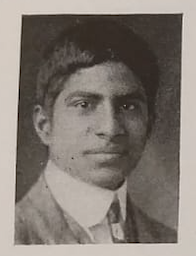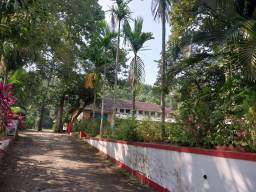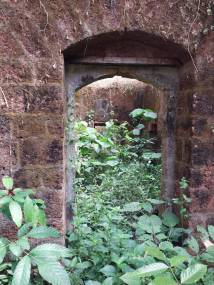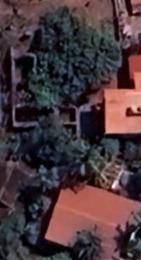 D D Kosambi died in his sleep on 29 June 1966, a few weeks short of his 59th birthday, in his home on Bhandarkar Road in Pune. The date of his birth is recorded in his High School yearbook as 31 July 1907, but the place of his birth is not as clearly specified. In various essays written after his passing (as well as on Wikipedia) it is mentioned that he was born in Kosben, allegedly a small village in Portuguese Goa. There are no traces of this village in today’s Goa, but this is in of itself not odd since many such settlements might well have shifted in the course of a century. However, Kosambi himself does not mention Kosben in his writings.
D D Kosambi died in his sleep on 29 June 1966, a few weeks short of his 59th birthday, in his home on Bhandarkar Road in Pune. The date of his birth is recorded in his High School yearbook as 31 July 1907, but the place of his birth is not as clearly specified. In various essays written after his passing (as well as on Wikipedia) it is mentioned that he was born in Kosben, allegedly a small village in Portuguese Goa. There are no traces of this village in today’s Goa, but this is in of itself not odd since many such settlements might well have shifted in the course of a century. However, Kosambi himself does not mention Kosben in his writings.
The surname Kosambi is an invention that dates back to his grandfather’s generation, when the family (according to Meera Kosambi’s prefatory note in Nivedan, her grandfather Dharmananda Kosambi’s autobiography) who were originally known as the Shenai-Lotlikars, from the village of Loth (which is also untraceable on today’s maps) moved to escape persecution, and variously adopted the surname Kosambe or Kossambe drawn from the name of the village they moved to. Whether this was Kosben is not clear and in any case Dharmananda, who modified the spelling from Kossambe to Kosambi as a nod to the ancient Buddhist city of that name, grew up in and around the village of Sankhwal or Sancoale.
 The family house is still standing, home today to the Sahaj Marg Spirituality Foundation‘s Shri Ram Chandra Mission Heartfulness Meditation centre. As their newsletter Echoes noted in 2013, the Goa ashram was “gifted by Br K.D. Kossambe of Mumbai” although as Nayanjyot Lahiri wrote in her brief vignette Remembering and Forgetting, Dharmananda Kosambi and Other Goan Saints, there are no markers to indicate that this had once been the Kosambi homestead.
The family house is still standing, home today to the Sahaj Marg Spirituality Foundation‘s Shri Ram Chandra Mission Heartfulness Meditation centre. As their newsletter Echoes noted in 2013, the Goa ashram was “gifted by Br K.D. Kossambe of Mumbai” although as Nayanjyot Lahiri wrote in her brief vignette Remembering and Forgetting, Dharmananda Kosambi and Other Goan Saints, there are no markers to indicate that this had once been the Kosambi homestead.
Dharmananda’s sister had been married into a family in Chikli (or Chikhali) another village some 25 miles to the north of Sankhwal, and this eventually led to his marriage with Balabai Lad (लाड, also spelled Laud in Indrayani Sawkar’s book, Dharmananda Kosambi: An untold story) of that village in 1892, when he was sixteen years old. The Lad family was quite prosperous: Dharmananda’s brother-in-law Sakharam, one of the first Indians to study medicine in Lisbon, returned to Goa and set up practice in the market town of Mapusa. When Balabai was to have her first child, she returned to her home in Chikli: Dharmananda mentions in Nivedan that his eldest daughter Manik was born at the Lad house in Chikli on October 26, 1899.
Balabai was to spend a fair amount of her married life in this house when Dharmananda was away on his peregrinations, first to Poona, Varanasi and Nepal, then to Calcutta, Madras, Colombo and Rangoon, with numerous stops and side-trips. Indrayani Sawkar, a granddaughter of theirs, has documented some of this in the fictionalised biography Dharmananda Kosambi: An Untold Story. By 1906 Dharmananda was teaching Pali at Calcutta University and Balabai joined him, but in 1907 she was back in Goa, pregnant with their second child. Dharmananda brought her to Chikli to leave her with her natal family and returned to Calcutta via Baroda (where he met the Gaikwad and agreed to eventually move to Baroda) leading to more wanderings, to Bombay, Pune, Cambridge, Leningrad, and so on…

I had gleaned most of the above from Nivedan and from the Untold Story, which also had a photograph of the Lad house, along with the inscription “Laud House at Chikhali, Goa. Bala and her children Manik, Damodar (Baba), Manorama (Manu) and Kamala were born and raised here by the Laud brothers.”
Given that the date of construction of the house is not known, Balabai’s having been born here is conjectural, but what is more certain is that DD Kosambi was born in the Lad house (as, subsequently, were his sisters Manorama in 1909 and Kamala in 1918). For much of 1907, Dharmananda Kosambi was teaching in Calcutta, only returning to visit his family in Goa later in the year. Given his taciturnity about personal matters, there are very few references to his family in Dharmananda’s writings so considerable interpolation is needed in order to match times, places and events.
 A week ago I was in Chikli/Chikhali and with the photograph in Sawkar’s book and more than a little luck I was able to track down the Lad house. Like the Kosambi home in Sankhwal, it is no longer with the descendants of the Lads, but it is in utter ruin, the roof having caved in some time ago, so all one can see is the bare outline of what must once have been an imposing structure. The house is large, and one can imagine that it once commanded quite a view of the lands that the Lads owned, and probably a view of the Chapora river as well.
A week ago I was in Chikli/Chikhali and with the photograph in Sawkar’s book and more than a little luck I was able to track down the Lad house. Like the Kosambi home in Sankhwal, it is no longer with the descendants of the Lads, but it is in utter ruin, the roof having caved in some time ago, so all one can see is the bare outline of what must once have been an imposing structure. The house is large, and one can imagine that it once commanded quite a view of the lands that the Lads owned, and probably a view of the Chapora river as well.
There are neighbours who remember the Lads, and in particular one who was able to show me different rooms within the ruins of the house, including the one where births usually took place. (The practice, of sequestering a room for this purpose in a corner of the house that could have an access from both inside and outside, was quite common – I recall my mother telling me of a similar room in Allathur Villa, her ancestral home in Madras, where she and her siblings had all been born. And also her mother, but that is a different story.) But there was not much awareness of DD Kosambi, or indeed of others on that side of the family: when I mentioned the name, one of my interlocutors reached for his smartphone and quickly read the Wikipedia entry, so that even recognition is, with each passing day, fading rapidly.
But this post is not just about setting the record straight on the matter of where DD Kosambi was born. The University of Goa has established a DD Kosambi Chair in Interdisciplinary Studies, funded by Directorate of Art and Culture under their Visiting Research Professorship Programme, one way of rejuvenating and revitalising the University by bringing in scholars from other institutions for short periods of time, and this year, I have the privilege of occupying this position. There is the attendant responsibility of living up to the name – of emphasising interdisciplinary scholarship – but given my interest in the Kosambis, that is relatively straightforward, and something that will occupy some or all of my time this coming year.
Both D D Kosambi and his father Dharmananda Kosambi have been rare, important, public figures: the former a polymath with formidable intellectual abilities in a broad range of disciplines, and the latter a mahatma who spearheaded the Buddhist revival in India, a near saintly figure who embodied pure scholarship, both classical and contemporary. One does not need to remember them for nostalgia alone – their contributions to the development of ideas and critical thought in modern India have been significant, and much is needed to be done to keep the memory of such forebears alive in the public domain.
Interesting!
LikeLike